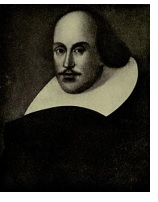

One of the greatest connections to the works of William Shakespeare, the original Globe Theatre, sadly, is long gone. Closed by Puritans, some pretty harsh critics of theatre, in 1642, it was taken down 2 years later. Fortunately for fans of the Bard of Avon there's a faithful reproduction presently located only a few hundred meters from the original site. The consuming passion of too little known American actor Sam Wanamaker, today's Globe Theatre in London offers performances of Shakespeare's plays for the entertainment of those visiting London during the summer along with tours of the facility. Wanamaker never got to see what he had wrought as he died shortly after construction began. Though there are no known drawings of the interior of the original, every care has been taken to faithfully recreate the theatre as accurately as possible. Scholarly studies from the intervening 400 years have allowed designers to make the reconstruction close to the original. A sketch made in 1596 of the assumed-to-be similar Swan Theatre is just one small example of some of the evidence used in the reconstruction of the Globe Theatre. 
Of course, some modern concessions have been made to safety, such as the installation of overhead sprinklers. Still, the visitor to the Globe will find both the exterior and the interior pretty much what he or she would expect from the times when Elizabethan actors trod the boards. The round, white background with dark trim, the thatched roof (the first allowed in London since the Great Fire of 1666) and hundreds of details make seeing the site a journey back in time. Though the original Globe Theatre was destroyed in 1644, its exact location was rediscovered in 1989 when remnants of its original foundations were discovered beneath Anchor Terrace on Southwark Bridge Road. Unfortunately, legal, and other restrictions, prevented rebuilding on the original site. However, the new site should be close enough by for all but the most demanding visitor, and the re-creation accurate enough to allow the original to be easily imagined. That imagination can be aided by taking one of the offered tours of the building. A staff of knowledgeable guides direct groups around the nearly circular building showing the high balconies and the low wooden benches near the front. At favorable times, when no rehearsals are being held, tours also take the visitor to parts of the 12m(40ft) wide by 9m(30ft) deep stage. Guides explain how special effects of the time (pre-computer animation) were created, including use of the trap door and the large, open area under the stage. With luck, you'll catch a sword-fighting exhibition.  It continues into exhibition rooms showing artifacts and facsimiles of
the period. A table with writing implements of the type Shakespeare
used is evident along with several other 'scene setting' chairs and
decorative items. It continues into exhibition rooms showing artifacts and facsimiles of
the period. A table with writing implements of the type Shakespeare
used is evident along with several other 'scene setting' chairs and
decorative items.There's also a gift store adjoining the modern lobby where recordings, photos and cards, and (of course) the plays can be purchased. Visitors can purchase tickets to the professionally staged plays and enjoy being a groundling or an aristocrat. "Groundlings" were theatre goers who sat or stood near the front. By contrast to today, the area provided cheaper admission. Well-to-do merchants and royalty, or simply the well connected, sat further back and higher. On these wooden benches, under the open sky visitors can turn around before the play begins (there is no curtain to raise) and see the 1,500 souls assembled to watch the performance. (The original theatre held 3,000.) Then, at the sound of the first trumpet, return your attention to the stage and be held rapt by a dramatic and faithful rendering of one literature's greatest plays. The new Globe is easy to reach via the London Underground, i.e. "the tube" or subway. Exit at St Paul's Cathedral station. No trouble finding it as the theatre is opposite. Globe Theatre Address More Sights to See in London Sitemap Cities of the World |
|
|
|
|
|
|
Page Updated 2:45 PM Monday 7/27/2015